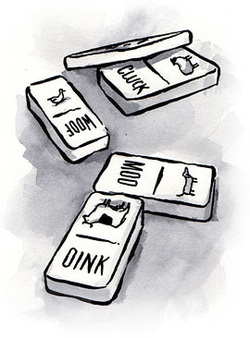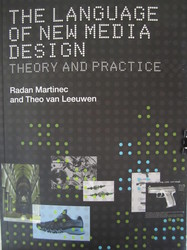When I read Jason Whittaker's book, what seems like months ago, I was a little, well really a lot, disappointed on how he handled the writing aspect of web design. If you read back, he commented more than I thought necessary on grammar issues. While these things are certainly important in the final output, they cleraly should not be the first thing or the most important thing. In fact, a minor mention would be more than enough to get the point across.
So I was pleased, well really happy, when I read Bronwyn Jones' article on the Web entitled "Better Writing Through Design." To be honest, I didn't know what to expect from the title, but I feared that there would be mentions of close editing and grammar checking. In reality, Jones discusses the fact that everything on a web page communicates: the navigation, the colors, the images, everything, and that includes the written text. Jones argues that if you "apply a design process to your words as well as your images . . . you just may fine your voice" ("Better Writing").
Even though the article is short, Jones makes clear, concise points about the importance of content in web design. He also points out repeatedly the importance of audience, listing 5 questions that you should keep in mind when both designing and writing. As Jones points out, you need to give your readers an identity they can connect with, not some artificial voice to which no one can relate.
Bottom line: you need to be more concerned with content rather than mechanics, and you gotta keep it real!!
Today I read the introduction/first chapter to Radan Martinec and Theo van Leeuwen's text The Language of New Media Design: Theory and Practice. First, I'm not afraid to admit that this is one of those texts I ended up reading out loud. Some times that is about the only way I can focus and take in what I'm actually reading (and even that doesn't always work). Unlike some books where you can read the intro and get a general idea of what the book is about and then fill in the blanks as you read, I have the distinct impression that with this book you had better understand this first chapter completely before proceeding or else you will be lost.
The authors discuss New Media Design in terms of semantics or semiotics. The authors state that the purpose of the book "is that new media are, or should be, structured by invisible underlying patterns that connect image, sound and text into meaningful wholes" (1). They then get into a brief but interesting discussion of systemic linguistics (about here was when I decided reading out loud might be beneficial), move to a discussion of non-linear models such as the part-whole tree and star, and then talk about strategies for employing models and methods, all based on semantics.
Even though I had difficulties at times staying focused, this is definitely a book that I am interested in jumping right into. The intro was only 14 pages and yet I have notes scribbled all over the margins. I was definitely immersing myself into this text and interacting with it in a meaningful way (the marginal comments are not snarky). One thing the authors note toward the end of the intro is that "the intention of the text, as realized by its lexical and grammatical patterns, needs to be respected when translating it into a non-linear model. Domains (and texts) of any complexity tend to require more than one simple non-linear model to map out their semantic structure" (13). I think that this is often over looked when new, and maybe even some seasoned, designers take on the task of designing new media products.
This introduction even got me to thinking about the purpose of this new media site and whether or not I am reaching my intended audience. When a text immediately gets me thinking about things I am doing, then I am interested. While I am not a huge fan of semiotics, and have picked up and sat down the Introduction to Semiotics a million times (well, maybe only three or four, then I lost it), I like the way these guys are employing semantics to drive home the point that the design of a site has to connect to the meaning!!
Ok, enough said by me. Feel free to blast away or simply comment if you'd like.


 RSS Feed
RSS Feed

